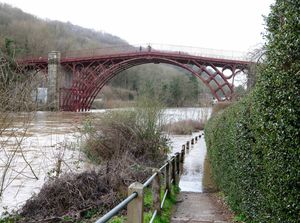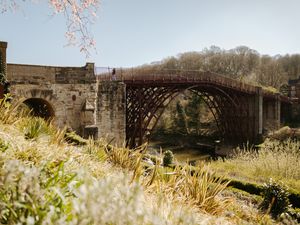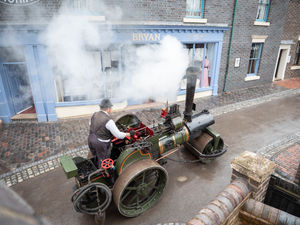Flooding fails to hit Ironbridge property market as gorge house prices rise
Homes in the Ironbridge Gorge are soaring in value as the UK housing market sees demand continue for locations with great views at a more affordable price.

The price boom in the World Heritage site is in contrast to prices near other famous landmarks around the UK where values are falling.
Research by GetAgent.co.uk has found that overall the price of buying a home near one of the UK’s most famous landmarks has dropped by six per cent in the past year, despite a pandemic market boom pushing the average UK house price up by 10.8 per cent during the same time.
This property price decline, equivalent to almost £40,000, is based on the current average asking price for homes within the same postcode as famous landmarks against the same time last year.
Despite the overall drop, homes near some famous landmarks have experienced impressive price growth.
The influence of the pandemic is undeniable in this sense, with the Lake District in Lancashire topping the table with a 22 per cent increase – £71,132 – in the past year alone.
The Ironbridge Gorge is in second place nationally. The town has been hit by flooding three years running and is awaiting better defences from the River Severn. But that hasn’t put potential house buyers off. They are attracted by the iconic gorge, its link with Britain’s industrial revolution and the fact it is so close to the M54 and M6 motorways.
House prices in the TF8 postcode rose by 19 per cent or £45,749 to an average £282,404 asking price this month.
While the rise reflects how attractive the area is, Ironbridge Gorge ward Councillor Carolyn Healy struck a note of caution for those young people and low wage earners who are looking for a local place to live.
"It is a beautiful and wonderful place to live," said Councillor Healy who moved to the area 11 years ago and doesn't regret it one bit. "There is a very strong and vibrant community with lots of great businesses, attractions, and restaurants."
But she suspects that there are a lot of second home and holiday let purchases among that, which is a "perfectly legitimate" thing.
"It means that there can be a detriment because rising prices are a double-edged sword for people who find that properties are too expensive for them.
"We need to look at this in terms of affordability for people who grew up here and want to find a place to stay, to keep that great community going."
While rising prices show "what a wonderful place it is, the downside is that it can be hard if you have grown up in the Gorge and you want to stay," said councillor Healy.
She is the cabinet member for climate change, green spaces, natural and historic environment and cultural services with the ruling Labour group on Telford & Wrekin Council.
While there is little appetite or room for new housing in the Gorge, according to the councillor, the "challenge is how to get the right balance."
"We probably have to do something about having some affordable housing for the next generation," said Councillor Healy.
The reduction in demand for city living during the pandemic, particularly across the London market, is a trend that is also apparent when it comes to famous landmark property prices, with the Tower of London seeing the largest annual decline in the average asking price at 15 per cent.
However, London’s much-reported declining property market has started to show signs of a bounce back in more recent months, with Buckingham Palace placed third on the table after asking prices increased by 13 per cent in the past year.
The Houses of Parliament and Westminster Abbey have also seen strong growth and these landmarks are also home to the highest average asking price of all landmark property markets at over £1.3m.
Other famous landmarks where asking prices have dropped in the last year include Hadrian's Wall (three per cent), York Minster and Nelson's Column (both one per cent).



